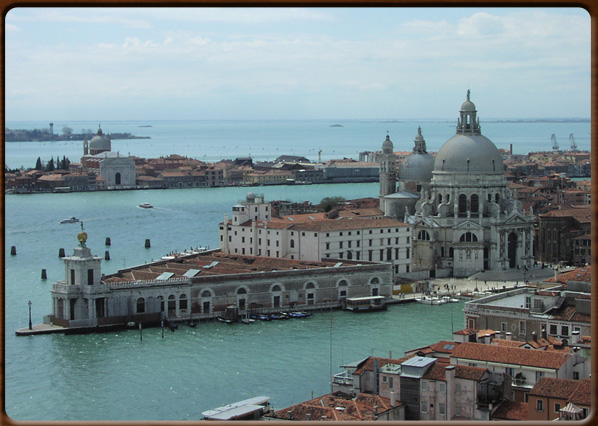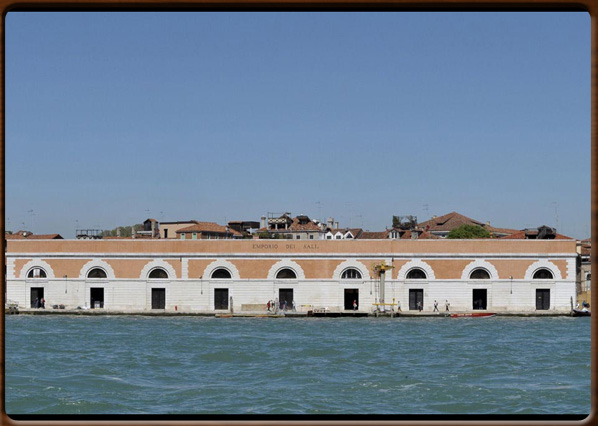
Salt warehouse in Dogana da Mar.

Salt warehouse in Zattere.


No video
The origins
There are many archaeological remains supporting the theory that there were already salt-works in the Venetian lagoon during the Roman period. In a letter to the “Tribuni Marittimi” from the first half of the 6th Century, Theodoric’s minister Cassiodoro insisted on the importance of salt production in the Venetian lagoons: “All efforts are aimed at exploiting the salt-works: instead of the plough, you have rollers. That’s where your wealth comes from”.
Salt was one of the major goods used for bartering, a sort of currency used by the lagoon people to buy wheat and other products from the mainland and therefore was the beginning of Venice’s future commercial success. The city of Venice (Civitas Rivoalti) gradually expanded from the original nucleus to the surrounding area, by reclaiming the land and building on the what were originally mill ponds and salt-works. In 1200, the lagoon looked quite different to what we see today: there were large salt-works in the areas of Cannaregio (Luprio) and Dorsoduro, where the imposing Salt Warehouses (Magazzini del Sale) would be built some two centuries later.
The lagoon salt-works
Venice had already started to export salt to the Po Valley by the end of the 9th Century.
During the Middle Ages, salt became the best way to increase the lagoon’s wealth and status. This was a hard task, mostly carried out by the Benedictine monasteries scattered around the lagoon area. A few old documents give us an idea of the situation at the end of the 1200s, the period of maximum salt production: there were 119 salt-works, one third of which in the northern lagoon between Murano, Sant’Erasmo and Torcello, the other two-thirds in the territory of Chioggia. The salt-works in the North were soon abandoned and replaced by fishing valleys, while salt continued to be produced in the Chioggia area until the early 1500s.A fondamento (the salt production site) could have anything from between 10 and 50 or more salt-works. These complexes were run by salters and were protected by a dam that allowed the seawater to enter a morario, a large evaporation pool, and then into smaller pools until the water crystallised to form sodium chloride (kitchen salt).
The Venetian monopoly
Towards the end of the 12th Century, Venice started to adopt an important policy that controlled the salt trade. Sea salt started to be imported from the Adriatic and the Mediterranean in 1240.
In 1281, Venetian merchants were required by the policy known as “ordo salis” (the salt rule) to return to Venice with a load of salt, perhaps as a convenient form of ballast, thus also helping to lower costs for Venetian merchants.
A specific administrative body needed to be set up in order to manage the complex system: from tax collectors, official seals and registers to the monitoring of shipping, trade and stores with the application of duty and tolls, plus the need to prevent smuggling. A powerful autonomous organ was the result: the “Magistrato al sal”. Within a short space of time this became one of the most important bodies in the Venetian Republic.
By the end of the 1200s, the Venetians had acquired control of the large salt-works in Cervia along the North-East shores of the Adriatic and received so much salt that they could export it to the entire Po Valley and Tuscany. Once Venice’s control over the production and sale of this “white gold” extended virtually right across the Adriatic and the Mediterranean (including the Puglia coastline, Sicily and Sardinia, not to mention Crete and Cyprus), its salt monopoly became a powerful tool for Venice on an international scale.
The salt warehouses
The need to have deposits of salt in hard times, such as during the war against the Republic of Genoa (14th Century) meant that the Venetians started to build large warehouses in the city to store the huge amounts of imported salt (some 3,000 tons of salts arrived from Cervia alone each year).
Special depots were built in Dorsoduro, in the area known later as Punta della Dogana, called "Saloni": these had reinforced perimeters to support the enormous weight of the salt inside. There were more than twenty such warehouses in Venice during the 16th Century, mostly built in the 1300s and early 1400s.
The way these stores were managed, involving tenders for contract and special shipping, unloading and storage systems, continued even after 1797, thus surviving for many years the fall of the Venetian Republic.
400 - 1000 - - rev. 0.1.8